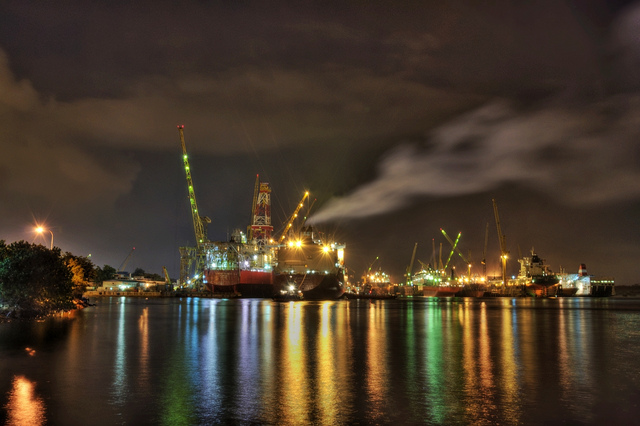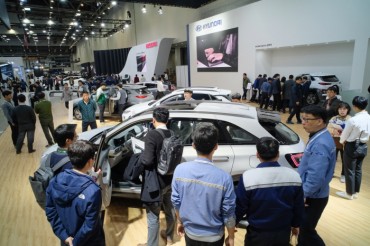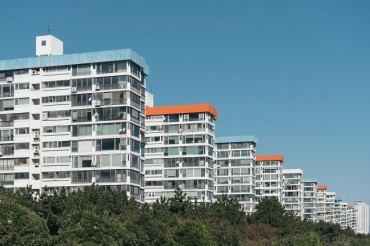
Chinese shipbuilders took the first place in the area of both merchant ships and offshore plants during the first half of 2014. (image: Schristia/flickr)
SEOUL, Aug. 6 (Korea Bizzwire) – China’s shipbuilding industry is leading the global market in both merchant ships as well as offshore plants. With the help of the Chinese government in winning overseas orders and lending financial support, the country’s shipbuilding industry has swept the world market in the first half of 2014.
In contrast, a decreasing number of orders and below-cost new orders have put South Korean’s shipbuilding industry in trouble. Industry analysts say the South Korean industry needs to devise effective strategies, without which it wouldn’t be easy to outpace the Chinese counterparts armed with price competitiveness and technology.
London-based market research firm Clarkson Research announced on July 3 that Chinese shipbuilders won 900,000 CGT, or 47.7 percent in total, in new orders to take the top position in the month of June while Japanese shipyards grabbed 490,000 CGT orders, or 25.9 percent, ranking No. 2 and the Korean competitors won 310,000 CGT orders, or 16.6 percent, ranking No. 3.
Chinese shipbuilders took the first place in the area of both merchant ships and offshore plants during the first half of 2014. They won a total of 40.8 million DWT ship orders, up 78.2 percent compared with the previous year, and also won a total of 152.1 million DWT order backlogs, up 39.5 percent compared with the same period last year. New orders for offshore plants amounted to 81, totaling $7.9 billion.
Above all, industry analysts focus on the fact that Chinese shipbuilders are outpacing Korean rivals even in the offshore plant field for which it is necessary for the shipbuilder to have state-of-the-art technology. Given that Chinese shipyards have received an increasing number of merchant ship orders at lower prices, their rapid progress in the offshore plant area foretells China’s dominance in the industry.
In 2003, Chinese shipbuilders surpassed the leading Singaporean counterparts in a short period of time in the jack-up rig market. (A jack-up rig refers to an exploratory drilling platform to extract continental shelf oil.) They also rapidly entered the drillship and FPSO (floating production storage and offloading) field. Developing resources in their own offshore fields has helped China’s shipbuilding business including localizing and commercializing of offshore plants and equipment for shipbuilding to be improved.
Analysts said that as soon as China’s shipbuilding industry completes its restructuring effort and streamline its production system, China’s technologies in the field will be more enhanced. They also said that the Chinese shipyards are growing much faster as the Chinese government aggressively nurtures and supports the industry by commissioning ships and plants to national shipbuilders.
According to a report published recently by the Korea Institute for Industrial Economics & Trade (KIET), China’s shipbuilding industry is expected to rapidly grow as the government supports to create demand and the shipbuilders gain capabilities in the offshore plant field. The report added that it also helps that foreign shipping companies are increasingly placing orders with the Chinese shipbuilders.
As the Chinese government is encouraging its shipping companies to replace their obsolete fleets with new, energy-efficient ones, it will also benefit Chinese shipyards by creating more ship orders within the country.
Therefore, this situation puts Korean shipbuilders into intense competition with the up-and-coming Chinese rivals. “Price competition seems to begin as Chinese shipbuilders enter the offshore plant field following the merchant ship and equipment parts,” Hong Seong-in, researcher of KIET, said. “Korean shipbuilders urgently need to respond to the challenge more effectively,” he added.
By Veronica Huh (veronicah@kobizmedia.co.kr)






